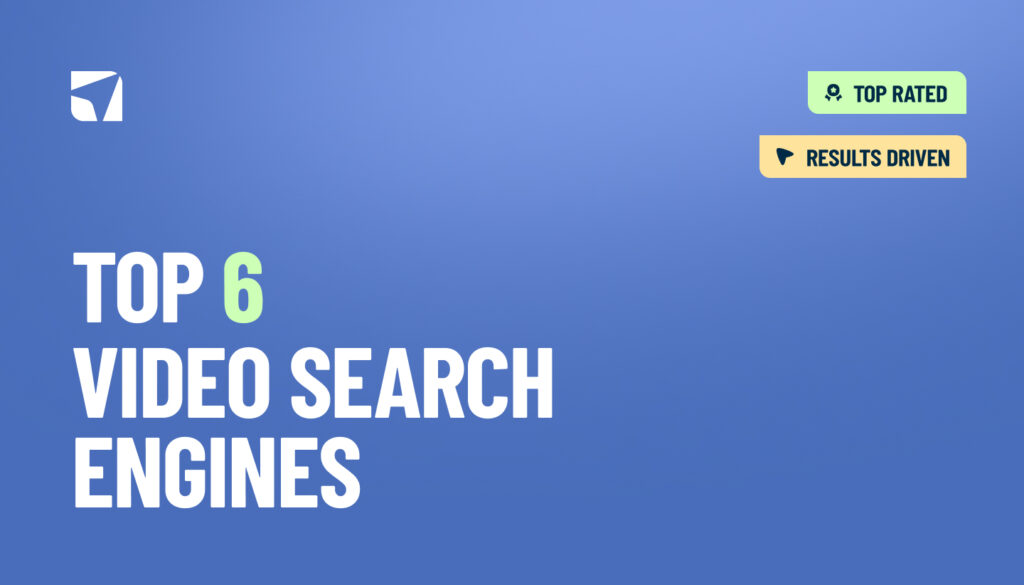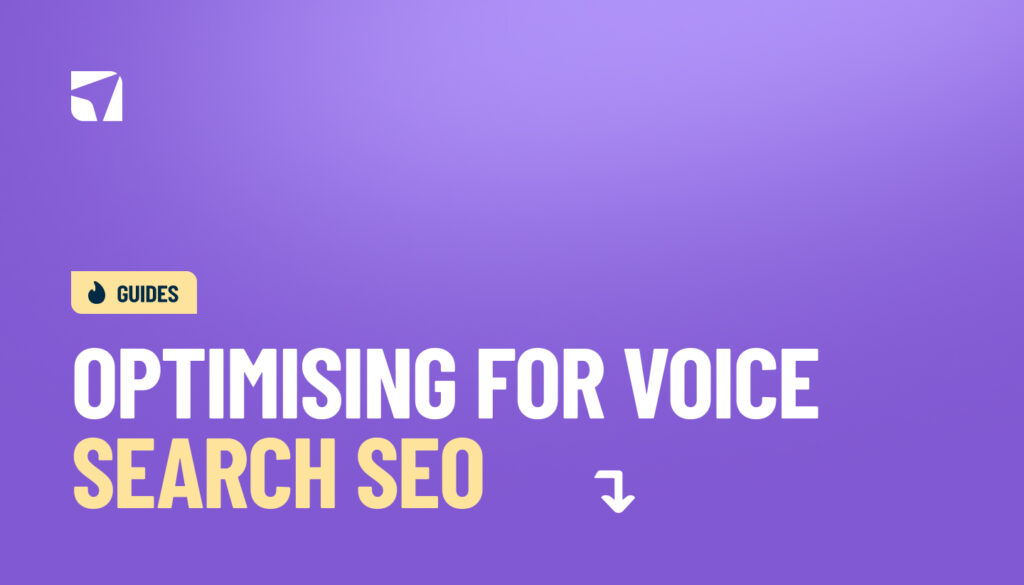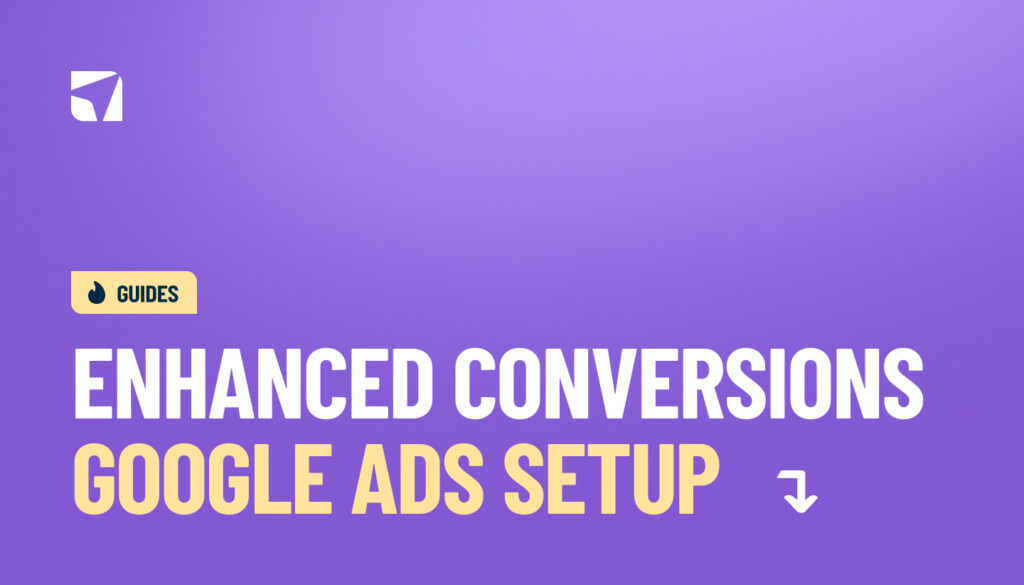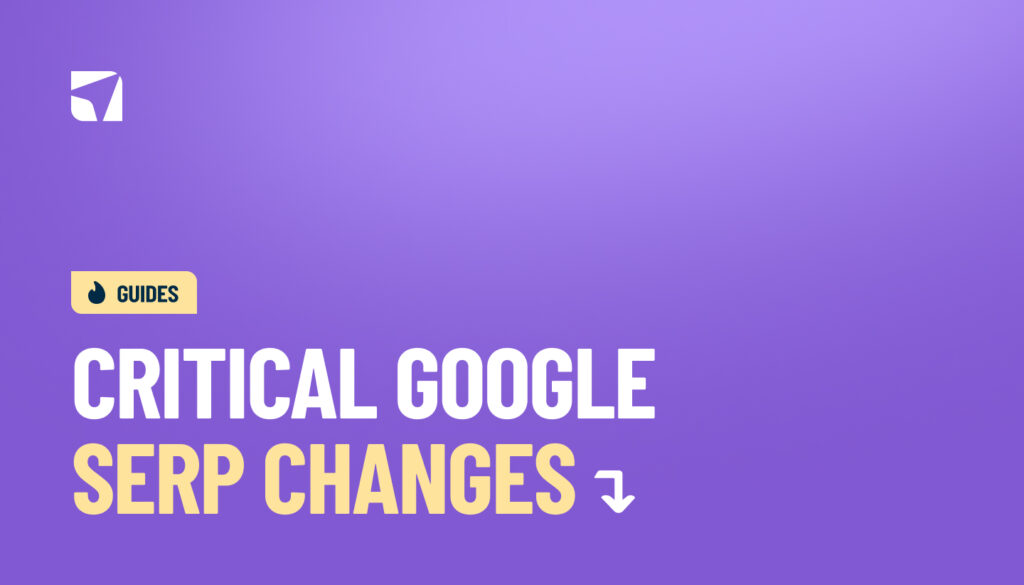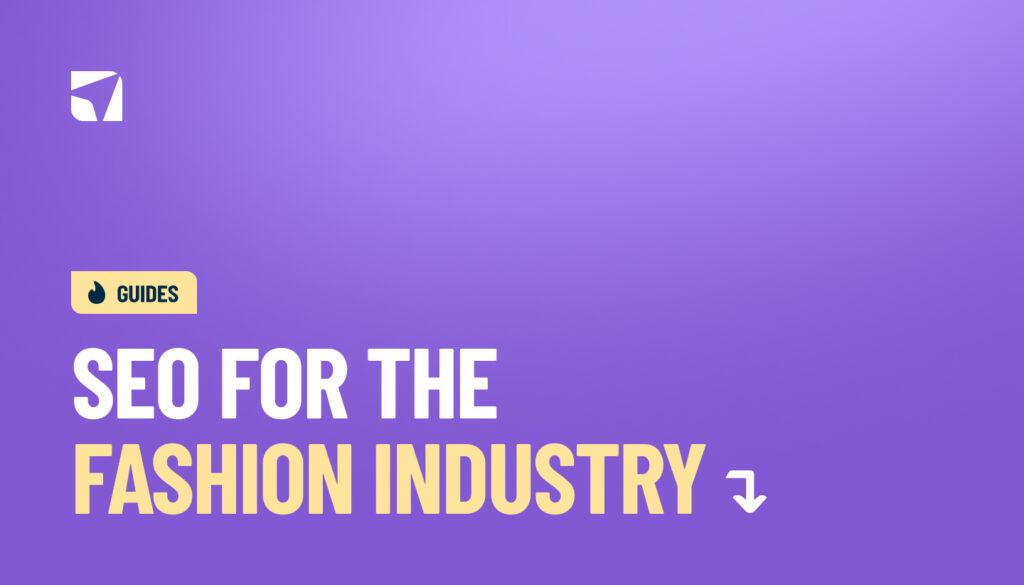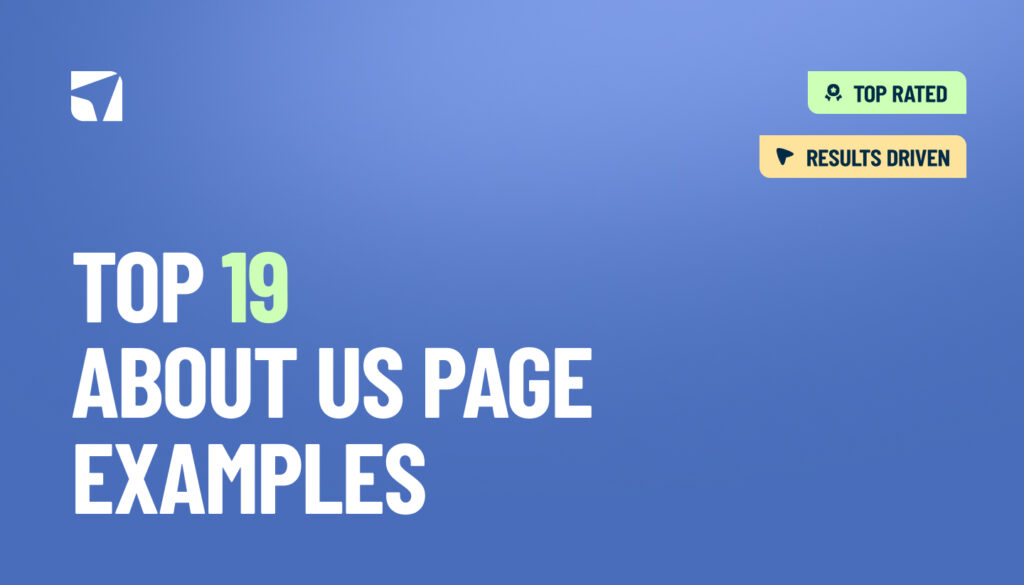For businesses in particular, video has become indispensable tool to showcase their work, highlight products, and ultimately connect with audiences in ways that static content can’t.
But creating great video content is only half the battle. If your videos can’t be found, all that effort goes to waste. Video search engines are platforms that help your content reach the people who actually want to see it.
Here are the top 6 you need to know…and how to make them work for your content strategy.
What Is A Video Search Engine?
A video search engine is a platform designed specifically to index, crawl, and retrieve video content. Unlike traditional search engines that focus on text, video search engines organise and present visual content with thumbnails, previews, and filters to make videos easier to find. Some engines gather videos from multiple sources, while others focus only on content uploaded directly to their platform.
How Video Search Engines Work?
Put simply, video search engines crawl the web, or their own platforms, indexing videos and organising them according to key factors like title, description, tags, and categories.
Since these engines can’t actually “watch” your video, they rely heavily on metadata, transcripts, and captions to understand what your content is about. This makes optimisation absolutely essential: the better your metadata and keywords, the higher your video climbs in the results.
Video Search Vs Traditional Search: Is There A Difference?
Yes. Video search and traditional search operate on very different principles.
Traditional search engines rank web pages primarily based on factors like backlinks, keyword relevance, and overall site authority (among other factors 👉Check out our blog for more details there!). The goal is to deliver the most relevant text-based content for a user’s query.
Video search engines, on the other hand, prioritise engagement. Watch time, likes, comments, shares, and audience retention all play a central role in determining which videos appear at the top of search results. Essentially, the more users interact with a video, the more likely it is to be surfaced.
To help users find the right content, video search engines also provide features and filters specific to video content. Users can search or filter by duration, date, resolution, quality, and format type, tools that don’t exist for traditional text-based search engines.
These make it easier for viewers to find exactly the type of video they’re looking for and help content creators reach the right audience more effectively.
Social Media as Video Search
Once used primarily for everyday users to connect with friends, family and other communities, social media platforms have evolved into major video search tools too. Brands and businesses have seen the kind of reach socials offer for individuals and have used that to their advantage.
Platforms like TikTok, Instagram, and YouTube aren’t just social networks anymore. They’ve become search engines in their own right.
Nearly a quarter of internet users turn to social platforms first when hunting for content. with younger generations prioritising visually-driven, authentic videos over traditional web results.
📈 Nearly 46% of Gen Z prefer social platforms over traditional search engines when looking for video content.
Social media’s emphasis on real-time, community-driven content means videos that are engaging, shareable, and optimised for platform-specific features are more likely to be discovered. Hashtags, trending topics, and community interactions all play a huge role in how videos are discovered here.
So, Why Use Video Search Engines Anyway?
As a brand you have to keep up. And that means leveraging video content. Sure, a website is essential, but video content is a game-changer when it comes to visibility, engagement ans even conversions.
Here’s how:
Organic Reach and Visibility
Videos get noticed. Simple as that.
On average, they’re 50 times more likely to appear in search results than text. With platforms like YouTube, your content can show up on both Google and YouTube, hitting massive audiences at once. Videos can appear as thumbnails in search results, featured snippets, or in video carousels, making your brand impossible to miss.
Capture and Retain Audience Attention
People spend more time watching videos than reading text. A lot of the time, it’s easier to watch a video, than read a whole page in the search for information.
Adding videos to your website increases dwell time, which search engines love. On social media, videos outperform other content. Interactive features like polls, live streams, and short clips can improve engagement by 15% – If it matches your audiences intent.
More likes, shares, and comments = more eyes on your content.
Multiply Your Reach Across Platforms
More often than not, a well optimised video can reach audiences across Google, YouTube, Facebook, Instagram, and more. With over 2 billion logged-in monthly users on YouTube alone, your content has the potential to reach massive, diverse audiences and boost brand awareness exponentially.
SEO and Overall Marketing Performance
Videos don’t just entertain, they can rank.
Videos don’t just entertain, they can rank. Embedding a video in a blog post or landing page can do wonders for both the video and the page itself. They reduce bounce rates, increase engagement and dwell time, and signal to search engines that your content is valuable.
Videos are also easy to share, making it easier to attract backlinks. They boost click-through rates, encourage repeat visits, and help your content reach new audiences across social media and other platforms.
📈 Landing pages with videos can increase conversion rates by up to 80%
Top 6 Video Search Engines You Should Know About
So, what video search engines should brands and businesses be paying attention to?
Of course, the obvious ones like YouTube and Google dominate the landscape with massive user bases. YouTube alone ranks as the world’s second-largest search engine (after Google, of course), attracting over 2.5 billion logged-in users every month, who collectively watch more than 1 billion hours of video daily.
But the world of video search goes far beyond these giants. Audiences are constantly looking for fresh, relevant content that fits their interests, and your brand needs to be where they’re searching.
TikTok has surged to 1.6 billion users worldwide, while Facebook serves over 3 billion active monthly users. This goes to show how powerful these platforms are in their own right.
💡Even outside traditional video platforms, search habits are shifting. Nearly half of online shoppers start their searches on Amazon rather than Google, highlighting how discovery is spreading across different platforms.
1. YouTube
We’ll start with the obvious one: YouTube. Since launching in 2006, it has grown from a simple video-sharing site into the world’s leading video search platform (and second larges search engine!), continually evolving to meet the needs of both viewers and creators.
But What Has Made It So Popular?
YouTube’s dominance comes from two key factors: massive audience reach and Google integration. The platform attracts over billions of users and searches every month, making the foundation for video discovery.
We’ve also seen a shift in how the next generation consumes content: visually, on-demand, and directly through video platforms rather than traditional text searches. In fact, an Austrian survey revealed that teenagers now rank YouTube as their #1 search engine, ahead of Google itself.
Discovery Features, Filters, and SEO
YouTube offers a robust set of search tools and filters that help rank, sort, and surface the most relevant videos for each user, making it easier for viewers to find exactly what they’re looking for while giving creators the opportunity to reach targeted audiences effectively.
Users can refine results by:
- Upload date: Find the newest content or trending videos
- Duration: Filter short clips from long-form content
- Features: Search for videos with subtitles, 4K quality, or live streams
- Sort options: Order results by relevance, view count, or rating
Behind the scenes, YouTube’s algorithm personalises results for each viewer. It takes into account factors like watch history, engagement metrics, audience retention, and video performance to determine which content is most likely to keep viewers engaged.
Seeing the popularity of shortform content platforms like TikTok, YouTube also launched it’s own branch – YouTube Shorts. Shorts are vertical, quick-consumption clips designed to capture attention fast and boost engagement. They help creators reach new audiences, take advantage of trending topics, and increase discoverability on both YouTube and Google.
Tips to Make Sure Your YouTube Videos Are Found
Creating great videos is only half the battle. Getting them discovered is what drives results. Here’s how brands can optimise their content for maximum visibility:
- Use target keywords in titles, descriptions, and tags: Place your primary keywords near the beginning of titles and descriptions to ensure they align with what users are searching for. Tags help the algorithm categorise your content correctly and connect it with related videos.
- Create eye-catching thumbnails: Visual appeal is crucial 90% of top-performing videos use custom thumbnails. Thumbnails should clearly convey the video’s topic, use bold, readable text, and feature compelling imagery to entice viewers to click.
- Prioritise audience retention and engagement: Watch time is one of YouTube’s strongest ranking signals. Videos that keep viewers watching longer not only perform better in search results but also drive more meaningful interactions. Encourage viewers to like, comment, and share your videos to boost engagement further.
- Add 2–3 relevant hashtags: Hashtags improve discoverability and help your videos surface in searches for trending topics. Stick to a few highly relevant hashtags rather than overloading your content, which can dilute effectiveness.
- Leverage YouTube Shorts, playlists, and channels:
- Shorts: Quick, vertical videos designed for rapid consumption. Shorts help brands tap into trending topics, reach new audiences, and increase engagement with “snackable” content.
- Playlists: Organise related videos to boost watch time, encourage binge-watching, and create new search opportunities.
- Channels: Keep your content organised and brand-focused. Channels provide a central hub where viewers can explore your videos and subscribe for updates.
By combining these strategies, brands can maximise visibility across both YouTube and Google search, reach broader audiences, and build a more engaging content ecosystem.
Pros & Cons
Pros | Cons |
Massive potential audience with global reach | Intense competition: 500 hours of content uploaded every minute |
Free hosting with no bandwidth costs | Limited control over branding |
Videos appear in Google search results | Viewers may get distracted by related videos |
Best Use Cases: Long-Form vs. Short-Form
Both long-form and short-form videos have their place on YouTube. What you leverage depends on your goals and audience.
Long-form videos are ideal when you want to dive deeper into a topic, demonstrate expertise, or provide real value to your audience. Think tutorials, product demos, behind-the-scenes features, or storytelling that builds a stronger emotional connection.
A majority of YouTube views come from long-form videos, proving that audiences are still eager to engage with in-depth, high-quality content when it’s relevant and well-produced. Longer videos also boost watch time and session duration, both of which are major ranking signals in YouTube’s algorithm.
Shorts, on the other hand, shine when it comes to brand awareness, quick engagement, and trend participation. These bite-sized videos (usually under 60 seconds) are designed to capture attention instantly. They’re perfect for sharing quick tips, teasers, product highlights, or repurposing snippets from longer videos (have you seen our shorts?). Shorts also give your brand a chance to show personality and connect with younger audiences who prefer fast, scrollable content.
The smartest strategy? Use both.
Long-form videos position your brand as an authority and drive deep engagement, while Shorts expand your reach and keep you visible in trending spaces. Together, they create a well-rounded YouTube presence that builds awareness, drives traffic, and nurtures your audience.
2. Instagram
Originally launched as a photo-sharing app, Instagram has evolved into one of the most powerful video discovery platforms on the internet. What started with filtered snapshots has become a dynamic ecosystem for creators, brands, and businesses to showcase products, tell stories, and directly connect through video.
Instagram as a Video Search Engine
Instagram’s evolution into a search destination is a direct reflection of how user behaviour has shifted in recent years. Today, people aren’t just searching for information, trends, and products directly within the app.
Users can discover videos through hashtags, location tags, and Instagram’s in-app search tools, which surface content based on interests, engagement, and trending topics. The platform’s visual-first design makes it perfect for discovery, where every video, Reel, or Story has the potential to go viral.
For brands, Instagram’s shift to video has opened massive marketing opportunities.
- Video sharing (2013): Allowing businesses to post short clips and product demos.
- Stories (2016): A 24-hour storytelling feature that drives urgency and engagement.
- Shopping features (2017): Turning Instagram into a visual storefront with clickable, shoppable posts.
- Reels (2020): A direct response to TikTok’s success, fueling fast, creative, and highly shareable video content.
And, in July of 2025, that reach got even bigger.
Public content from professional Instagram accounts are indexed by Google and other search engines. This means that both Instagram videos and posts will appear in the SERPs. This is a MAJOR change and has already reshaped how audiences find and engage with visual content online.
Your content isn’t limited to your followers anymore. It can reach entirely new audiences actively searching for your products or services. For marketers and business owners, it’s a major shift that has turned Instagram from a social platform into a searchable, discoverable content hub.
Imagine you’re a local skincare brand that regularly posts product tutorials and customer testimonials on Instagram. After this update, a Google search for “hydrating serum for dry skin” could display your Instagram Reel or carousel post right alongside blog articles and product listings.
Your content isn’t limited to your followers anymore. It can reach entirely new audiences actively searching for your products or services. For marketers and business owners, it’s a major shift that has turned Instagram from a social platform into a searchable, discoverable content hub.
Search Algorithm and Trending Content
Instagram’s algorithm ranks videos using three core signals that determine what users see in their feeds, Explore page, and search results.
- Relationships: Instagram prioritises content from accounts users interact with most, whether that’s liking posts, replying to Stories, saving Reels, or sharing content. The more consistently someone engages with your brand, the more likely your videos will appear on their feed and Reels tab.
- Interest: The platform studies user behaviour, what they watch, comment on, or scroll past, to understand their preferences. So if someone regularly engages with fitness tips, for instance, your gym’s “Quick HIIT Workout” Reel has a much higher chance of being recommended to them.
- Relevance: Instagram also evaluates how well your video aligns with current trends, topics, and keywords. Using relevant captions, hashtags, and audio can help the algorithm understand your content and serve it to users actively exploring similar themes.
Beyond these signals, engagement metrics play a major role in visibility. Videos that hold attention, with strong hooks, eye-catching visuals, and authentic storytelling, tend to earn higher watch times, likes, comments, shares, and saves.
Pros & Cons
Pros | Cons |
Brand discovery leads directly to purchases for 50% of users. | Organic reach is limited to roughly 6–10% of followers due to algorithm dependency. |
Engagement rates exceed Facebook’s by 10x. | Producing consistent, high-quality video content requires time and expertise. |
Shopping posts attract clicks from over 130 million users every month. | Relying solely on Instagram carries risk if algorithm or policy changes occurs. |
Best Use Cases for Instagram Video
Instagram thrives when content feels visual, authentic, and audience-driven; the kind that connects emotionally rather than just sells. Businesses in lifestyle, fashion, beauty, food, travel, and experience-based industries often see the strongest video results, as these categories naturally lend themselves to visual storytelling and community engagement.
And there is data to back it up too:
- Reels now account for 20% of all time spent on Instagram, making them the platform’s most engaging format.
- Videos between 60–80 seconds receive 71% more views than shorter clips, long enough to tell a story, short enough to hold attention.
- Reels with voiceovers perform even better, drawing 110% more views than those without, thanks to the added layer of personality and connection.
However, as social media experts ourselves, we’ve seen how the right strategy can benefit businesses in almost every industry and niche.
For brands, the formula is simple:
- Use Reels to boost reach and attract new audiences.
- Use Stories to build connection and trust through behind-the-scenes moments or interactive polls.
- Use Shoppable posts and product tags to turn engagement into conversions.
This combination creates a full-funnel strategy on a single platform, one that builds awareness, deepens relationships, and drives sales at every stage. When your content looks great, feels real, and speaks directly to your audience’s interests, Instagram rewards you with visibility (and your followers reward you with loyalty).
3. TikTok
TikTok is arguably the platform that started the global short-form video revolution. What began as the spiritual successor to Vine exploded in popularity between 2019 and 2020 and has quickly becoming one of the world’s most powerful video search engines.
It’s videos are short and snappy. You can edit videos directly in app. The filters are funny and it’s incredibly easy to use. It’s easy to see why it’s seen such a boom.
Today, TikTok has over 8.5 million users in Australia (who spend atleast an hour a day scrolling!), and many of them use it for far more than entertainment. From local businesses and product reviews to news, tutorials, and recommendations, users turn to TikTok for content that feels relevant, personal, and real.
Search Tools & Discovery Features
TikTok’s search experience is built around personalisation, discovery, and intent-driven exploration, helping users find exactly what they want (and plenty they didn’t know they were looking for). Unlike traditional search engines that rely solely on keywords, TikTok’s system blends behavioural data with real-time engagement signals to continuously adapt to user interests.
At its core, TikTok acts as both a search engine and a discovery platform, surfacing content that feels relevant, relatable, and timely.
- Discover Page: The heart of TikTok’s search journey. It curates trending and recommended videos based on what users watch, like, share, or even pause on. This is where trends are born and where new creators often get their first exposure.
- Hashtag Search: Helps users explore content around specific topics, challenges, or communities. Hashtags not only connect videos but also act as powerful search anchors that boost discoverability and relevance.
- Keyword Search: Goes beyond surface-level captions, TikTok’s search system analyses on-screen text, descriptions, and even spoken words to deliver hyper-relevant results. This means optimising your captions with clear, natural keywords can make a big difference in how easily your videos are found.
- Sound Search: TikTok’s audio-driven culture means users can search by sound clips, trending songs, or voiceovers, a unique way to find content and participate in viral trends.
Watch time is the strongest signal of all. Videos that capture attention within the first three seconds are far more likely to go viral, showing up on more “For You” pages and search results. This is why hooking your audience early is so important.
Storytelling & Influencer Marketing
But TikTok’s impact goes far beyond the algorithm itself. TikTok thrives on authenticity, creativity, and storytelling, making it the perfect platform for brands that want to connect emotionally with their audiences.
It gives brands the opportunity to showcase their personality, humanise their message, and build genuine relationships with potential customers. Behind-the-scenes glimpses, quick tutorials, or relatable humour, TikTok allows businesses to express who they are in ways that traditional marketing can’t.
It’s also, become the epicentre of influencer marketing and user-generated content, reshaping how people discover, trust, and buy from brands. Businesses now tap into creators, both big and small, who already have engaged, loyal audiences.
When a creator showcases your product or service it feels more authentic, it feels more like a recommendation from a friend rather than an ad. Peer validation builds credibility fast and we’re seeing everything from collaborations and PR boxes to product demos and lifestyle content. In many cases these collaborations can outperform traditional paid ads in both reach and engagement.
For brands, the takeaway is simple: TikTok rewards authentic, audience-first storytelling. By combining strong keywords in captions, trending sounds, and influencer partnerships, businesses can amplify their visibility and connect with users in a way that feels natural, not forced.
Pros & Cons
Pros | Cons |
44% of users love TikTok’s authentic, short-form video format. | Content is searchable only within the platform.
|
Storytelling-focused videos resonate with users. | Excessive usage can lead to user fatigue.
|
Drives huge awareness for brands through UGC (user-generated content), influencer marketing, and content that feel genuine. | Data privacy remains a concern for some users and regulators. |
4. Facebook Watch
Facebook Watch is Meta’s dedicated video hub, serving as the platform’s central space for video content. With over 1.25 billion viewers each month, it has become a key destination for many brands to reach a highly engaged audience.
In June 2025, Facebook rebranded the Videos tab as the Reels tab, signalling its push towards short-form, shareable content.
Users can discover content in multiple ways:
- Use the Watch page directly, or type a query in Facebook’s main search bar and filter for videos.
- Sort videos by publish date to see the newest content.
- Filter for live videos, shows, or music, or view saved content.
For creators, content must be posted from Pages rather than personal accounts to appear in Watch. Monetisation is possible, but only after meeting certain viewership thresholds and adhering to Facebook’s monetisation policies.
Target Audience Considerations
While platforms like YouTube, TikTok, and Instagram attract predominantly younger audiences, Facebook tends to draw older demographics, including millennials and Gen X users. This makes it an ideal platform for brands targeting audiences with more purchasing power or those who respond well to community-driven, relatable content.
Service based businesses like coaching, wellness, consulting, and professional services can particularly benefit from Facebook Watch. These businesses can use videos to demonstrate expertise, share client success stories, or provide tutorials, giving potential customers a reason to trust and engage with their brand.
Brands can build deeper connections by linking content to Facebook Groups, creating communities around shows, tutorials, or other niche content. This social approach makes engagement feel more authentic, helping viewers interact, comment, and share in real time.
Pros & Cons
Pros | Cons |
Personalised recommendations and direct follows make content highly relevant to users. | Algorithm changes can dramatically affect content reach. |
Social features allow real-time engagement and conversation. | YouTube remains the dominant platform for search-driven video discovery. |
Access to Facebook’s massive global audience provides significant reach. | Monetisation rules are strict and require significant engagement to qualify.
|
Community-building features differentiate it from traditional video platforms. | May not always reach the most relevant audience |
5. Search Engine Video Search
While platforms like YouTube, TikTok, and Instagram dominate video discovery within their own ecosystems, traditional search engines are still essential for reaching audiences beyond specialised platforms.
Many users still turn to Google, Bing, or Yahoo when searching for tutorials, product demos, reviews, and educational videos, content that might not live exclusively on social media platforms.
📈 YouTube content accounts for 82% of all Google video search results, highlighting how closely these two ecosystems are connected.
Google Vs Bing Vs Yahoo: How They Differ
Google:
- As the world’s dominant search engine, Google handles around 91% of global search traffic, processing over 40,000 searches every second.
- Its dedicated Video Search tab pulls results not just from websites but also from social platforms and major video hosts, making it a comprehensive destination for video discovery.
- Google’s algorithm relies heavily on video metadata (titles, descriptions, tags), audience engagement metrics (watch time, likes, shares), and signals from the hosting page, such as backlinks and overall SEO authority.
- Google also uses advanced personalisation to show users videos that match their search intent, past behaviour, and trending topics, ensuring that top-ranking videos are both relevant and timely.
Bing
- Microsoft’s search engine differentiates itself with a grid-style video layout, which allows users to scan multiple thumbnails at once.
- Bing integrates autoplay previews and suggested playlists of related content, offering an intuitive browsing experience.
- Its algorithm also emphasises metadata and engagement but tends to prioritise structured data and schema differently than Google, sometimes giving smaller or niche content an opportunity to surface.
- Bing remains particularly useful for audiences in certain regions or demographics that rely on Microsoft products.
Yahoo
- Yahoo’s video search blends aspects of Google and Bing but stands out with unique preview features, such as hover-over video snippets and quick access to related content.
- While it still depends on metadata and engagement metrics, Yahoo caters to users seeking a simpler, more streamlined search experience, making it a good alternative for content that appeals to casual or less tech-savvy viewers.
Smaller Players: DuckDuckGo and Opera
- Privacy-focused search engines like DuckDuckGo and Opera also offer video search functionality.
- These platforms prioritise user privacy and minimal tracking, attracting audiences who are wary of mainstream data collection.
- Despite their smaller reach, they still pull video results from major platforms like YouTube and Facebook, making them valuable channels for niche or privacy-conscious audiences.
- For brands, appearing on these engines can help diversify traffic sources and reach users who might not interact with traditional search platforms.
How Search Engines Analyse Video Content
Search engines cannot “watch” videos in the way we do. Instead, they rely on a combination of metadata, structured data, and user engagement metrics to understand and rank videos. Key elements include:
- Titles and Descriptions: Clear, keyword-rich titles and descriptions help search engines match videos to user queries.
- Transcripts and Captions: Enable search engines to “read” spoken content, improving relevance for long-tail queries.
- Engagement Metrics: Watch time, likes, shares, and click-through rates indicate a video’s value to viewers.
- Hosting Page Signals: The overall authority of the page embedding the video, including backlinks and page SEO, directly impacts video ranking.
These factors combined allow search engines to present results that are relevant, engaging, and authoritative, ensuring users find content that truly meets their intent.
Why It Matters for Brands
Search engine video optimisation allows businesses to reach audiences outside of social platforms, capture high-intent viewers, and extend the lifespan of video content. Unlike social media feeds, where content can quickly disappear, search engine visibility ensures that videos continue to attract viewers months or even years after publishing.
One key advantage is the type of content that performs best on search engines. Users are often looking for long-form, informational videos, including tutorials, how-to guides, product demonstrations, and educational content.
These formats satisfy high-intent searches, provide real value, and keep viewers engaged for longer periods (some of the most important signals that boost ranking and relevance). For brands, this means producing content that answers questions, solves problems, or teaches skills, which not only attracts more views but also positions the brand as an authority in its industry.
Ultimately, search engine video optimisation bridges the gap between social engagement and traditional search, giving brands a dual advantage: capturing attention through social channels while also reaching users actively searching for valuable, instructional content.
6. Vimeo
Pros & Cons
Vimeo is a video search platform that prioritises quality over quantity. Unlike larger platforms where viral reach dominates, Vimeo caters to creative professionals and businesses who want a polished, ad-free viewing experience with more control over their content and branding.
The platform also emphasises curation. Categories are hand-picked by Vimeo’s team, helping users discover content aligned with specific interests. SEO-friendly features like transcripts, detailed descriptions, and tags make videos easier to find both on Vimeo and through search engines.
Vimeo allows users to refine results by:
- Type: Full films, animations, tutorials, or promotional videos
- Category: Arts, education, marketing, or tech, among others
- Duration: Short clips or long-form content
- Upload Date: Filter by newest or trending content
- Resolution: Ensure high-quality playback for professional projects
These options make it easier for users to find highly relevant, curated content, which is particularly useful for brands targeting niche audiences or sharing specialised educational and marketing materials.
Pros | Cons |
Ad-free playback keeps the focus on your content | Free plan has storage and bandwidth limits |
Customisable player design allows for on-brand video experiences | Smaller audience than YouTube, meaning fewer views naturally |
Strong privacy controls, including password protection and domain-level restrictions | Advanced plans are more expensive than some competing services |
Best Use Cases
Vimeo works best for creative professionals, marketing teams, corporate communications, educators, and event producers. Ideal scenarios include:
- Portfolios & Showcases: Businesses can display high-quality work, case studies, or product demos that reflect their professionalism. Well-crafted videos help potential clients and partners find your brand and understand your capabilities.
- Client Presentations: Share videos of proposals, product walkthroughs, or service demonstrations in a distraction-free, ad-free environment. This ensures your content makes an impact and is more likely to be remembered (and found) by decision-makers.
- Video-Rich Websites & Landing Pages: Vimeo’s seamless embedding and customisation options let companies create video-driven websites or landing pages. Optimised with metadata, descriptions, and transcripts, these videos become searchable assets that boost discoverability and drive traffic.
- Internal Communications & Training: Share corporate updates, training tutorials, or onboarding materials with employees securely. While primarily internal, these videos can also be optimised for public content when relevant, helping your business extend its reach and authority online.
Niche and Emerging Video Search Engines
We’ve gone through some of the big players, but that’s not all the platforms out there. There are some smaller and more niche video search platforms that are shaping how specialised audiences discover and engage with content.
They aren’t designed to speak to everyone, but rather focus on specific interests, industries and communities.
1. TED
A global library of expert talks, ideas, and education-focused content. TED is built on credibility and thought leadership. For brands and creators in education, science, psychology, innovation, and social impact, it’s where audiences actively seek insight…not entertainment.
2. Twitch
The leading platform for gaming, live streaming, and real-time community interaction. Viewers come here for personality-driven content, conversation, and shared experiences. Twitch search surfaces both live and archived streams, enabling brands in gaming, tech, lifestyle, entertainment, or youth-focused markets to connect in real time.
3. Wistia
Designed for businesses that want polished and strategic video content, not viral clips. Wistia offers advanced analytics, customisable players, and strong embedding options, making it ideal for webinars, product demos, company explainers, and gated content that supports lead generation and customer education.
4. Metacrawler
A meta search engine that aggregates video results from multiple platforms. This is particularly useful for creators and researchers needing wider visibility across different video ecosystems. Its filtering tools help users find diverse content more efficiently than searching platforms individually.
If They’re Niche, Why Target Them At All?
It’s because they’re niche that these platforms can be incredibly valuable — for the right business. Audiences on these platforms aren’t browsing casually or killing time. They’re there with purpose. They’re passionate, curious, and actively seeking content that aligns with their interests, identity, or goals.
These users are often more invested, more loyal, and more likely to convert because the content they find directly speaks to their interests. Unlike broad platforms where your video competes with millions of distractions, niche video search engines offer a focused environment where visibility means attention.
- Know what they like
- Are willing to engage deeply
- Trust the communities they’re part of
- Value expertise, originality, and authenticity
It might not give you virality, but they have the opportunity to deliver qualified, engaged audiences who genuinely care.
Tips For Optimising Videos for Search Engines
Sure, video search engines are wide and varied. They cater to different audiences, interests, and intentions, which is exactly what makes them powerful.
But like any content we put on the internet, it needs to be purposeful.
You can’t just upload a video anywhere and hope that it lands. A video is only as good as its foundation. Strategy, structure, and optimisation. AKA Video SEO.
Here’s how to make your videos discoverable, engaging, and effective:
Keyword Research for Video Content
Video SEO starts with knowing exactly what your audience searches for. Use YouTube search suggestions, Google Keyword Planner, and video-specific SEO tools to uncover terms that balance search volume with realistic competition.
Focus on:
- Long-tail keywords targeting specific audiences with manageable competition.
- Intent-driven terms that solve viewers’ problems.
- Moderate-volume keywords (search volume 31–60) that can realistically rank.
Short-form videos, on the other hand, are typically consumed for quick answers, entertainment, trends, or bite-sized tips. These are ideal for audiences scrolling on mobile devices or looking for solutions now. Optimising short-form content means delivering value fast, within the first few seconds, while still aligning with relevant keywords and hashtags.
Craft Compelling Titles, Descriptions, and Tags
This is where you put your research to use. Titles and descriptions are your first impression to both search engines and viewers.
- Titles: Front-load primary keywords, keep under 60 characters, and make them attention-grabbing.
- Descriptions: Lead with key information (first 100–150 characters are most visible), expand up to 5,000 characters, and include secondary keywords naturally.
- Tags: Reinforce themes and related topics.
- n-screen text & spoken keywords: Ensure auto-captions reinforce searchable terms.
Well-optimised metadata signals relevance and improves your chances of appearing in search results across platforms.
Check out our YouTube for more ideas on how we’ve done it 👉 Digital Nomads HQ
Thumbnail Optimisation for Click-Throughs
If the popularity of videos is any indication, we’re visual creatures — we make split-second decisions based on what catches our eye. Custom thumbnails can make or break whether a viewer clicks on your video. In fact, 89% of top-performing videos use thumbnails created specifically for their content rather than relying on auto-generated frames.
Tips:
- High contrast & readability
- Keep it simple
- Accurately reflect your content
- Faces & emotions
- Consistency for branding
Video Length, Quality, and Engagement Metrics
Captions, Transcripts, and Structured Metadata
Algorithms reward videos people actually watch. Keeping viewers hooked signals value, boosting your visibility across search engines and platforms.
- Optimal length: Aim for 8–10 minutes (median 536 seconds) for long-form content. This is long enough to deliver value but concise enough to hold attention.
- Stunning quality: HD or 4K resolution isn’t optional—it’s expected. Crisp visuals keep viewers engaged and reduce drop-offs.
- Engagement metrics: Comments, shares, likes, and watch time are your currency. Top-performing videos hit engagement rates of 2.65%, compared to the platform average of just 0.09%.
When every second counts, attention retention becomes your most powerful video SEO tool.
Search engines can’t “watch” videos, so transcripts and captions serve as an indexable text layer.
Why transcripts and captions matter:
- Natural keyword integration: Embed important terms seamlessly without keyword stuffing.
- Repurposing power: Turn video scripts into blog posts, social media snippets, or newsletter content.
- Accessibility: Captions make your videos usable for all audiences, expanding reach.
- Enhanced user experience: Engaged viewers stay longer, sending positive SEO signals.
Structured data (Video Schema) takes it further:
- Provides search engines with critical info: title, description, thumbnail URL, duration, publication date, and topic relevance.
- Enables rich results in SERPs, including video snippets and thumbnails that grab attention.
Engagement Signals Everywhere
Engagement is your ticket to better rankings and broader reach. The more viewers interact, the more algorithms take notice, pushing your content to new audiences.
- Encourage likes, comments, shares, and saves with direct, compelling CTAs. Ask questions, run polls, or prompt viewers to share their thoughts.
- Respond to comments promptly to keep conversations alive. Showing that your brand engages with its audience builds trust and keeps momentum going.
- Place videos on pages surrounded by supportive copy, headings, and related keywords. This not only improves SEO but also reinforces relevance for search engines.
- Use features like pinned comments, clickable links, and end screens to guide viewers toward further engagement or conversion.
Leveraging Multiple Formats
You don’t have to stick to one piece of content. Repurpose and optimise it for broader reach across different platforms:
- Long-form tutorials → YouTube, Embedded videos on your website
- Short teasers → Drive viewers to full-length videos. Shorts, Reels, TikToks.
- Multiple platforms → Extend visibility and engagement.
Tools to Streamline Metadata and Captions
Optimising metadata and captions doesn’t have to be a grind. There are tools to make it faster, easier, and more precise…all while saving hours of manual work.
- Adobe Express: Automatically generates subtitles you can tweak for perfect accuracy—no more starting from scratch.
- Canva: One-click subtitle creation that’s stylish and professional, perfect for quick-turnaround content.
- Brightcove AI Metadata Optimiser: Scans both audio and visuals to produce rich, multilingual metadata that helps your videos get found globally.
These tools save time while maintaining accuracy, accessibility, and search engine compliance.
Master Video Search
Video search engines are discovery engines that connect your content to the people who actually want it. But every platform is different, with its own audience habits, algorithms, and engagement signals – and that means tailoring your content to these differences.
Your video content has value. These platforms simply provide the pathways to ensure the right people discover it. But, don’t forget to be authentic. Audiences want real connections, not overly polished or disconnected content.
